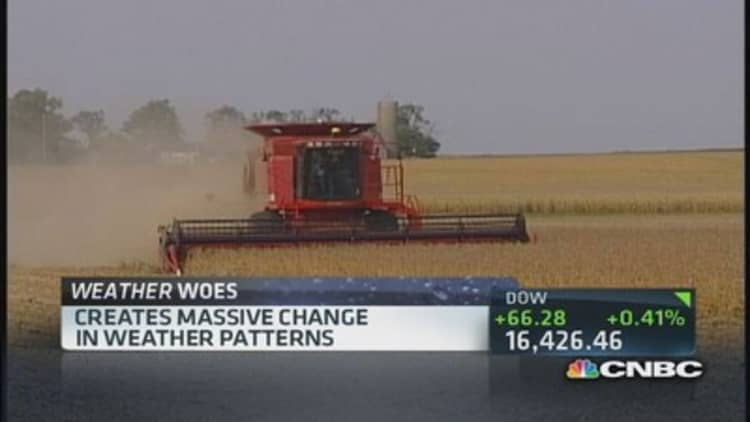Sugar has been on a high, but it may not look sweet for long.
Futures have jumped 7 percent this year, but analysts say it could be in for a fall due to large supply and weak demand.
Sugar is trading at about 17 cents a pound—a level it last hit in late 2013—but it could move closer to 15 cents within the next few months, said Tom Power, senior market strategist at RJO Futures. The current prices are far below the record set in 2011 when futures flew past 30 cents a pound, but they're still double of the lows of mid-2000s.
"[This] could eliminate a lot of the gains we saw earlier in the year," Power said. He noted that there may be short-term bounces, but the supply outlook in Brazil and India—the two leading sugar producers—makes the long-term picture bearish.
"Brazil produces an awesome amount of sugar cane," said Sterling Smith, a futures specialist at Citi, noting that the number adds up to 700 million tons.
The sucrose extracted from sugar cane can be manufactured into either raw sugar or ethanol. In Brazil, typically 48 percent of the sucrose goes into making ethanol and 52 percent goes into producing raw sugar, which is then processed into refined sugar. Though ethanol is heavily corn-based in the U.S., it is produced from sugar cane in Brazil.
Right now, Brazil is entering sugar cane harvest season. It is currently producing more ethanol than raw sugar because ethanol is commanding a higher price, Smith said. But he expects Brazil to start producing more sugar as the harvest moves into full swing.
In fact, Brazil's crop bureau Conab recently announced that it expects 2 percent growth in the cane harvest during the 2014-15 season.
India will boost sugar supply even more, as it is expects a fourth year of sugar production exceeding demand, according to Power.
India is also projected to have a normal monsoon season despite predictions of El Nino's weather-disrupting impact. India bounces back and forth between being a net exporter and net importer of sugar, and the monsoons will likely push it more toward being a net exporter.
"We have a global glut of sugar, and the global glut is not going to go away anytime soon," Smith said, adding that Thailand, too, has increased its production noticeably.

Slowing demand will also pressure the commodity. In fact, growth in global sugar demand dropped to 1 percent between 2009 and 2011 from more than 3 percent between 2003 and 2008, according to a report from Czarnikow Group.
Further limiting sugar's gains are the easing of sugary drink sales and relatively cheap prices of high-fructose corn syrup. People are also becoming more cautious about consumption, as health groups propose lower sugar intake recommendations.
"There's this stigma about sugar in your diet," Power said. "People are trying to get rid of sugar in their diet."
Still, some are salivating over sugar despite the weak demand.
"It actually has no impact on the next 12 to 18 months of determining sugar's price, demand and fundamentals," said Shawn Hackett, president of commodity brokerage firm Hackett Financial Advisors.
Hackett, who sees uncertainty of the supply in Brazil, India and Thailand, added that sugar is just starting its bullish turn.
But analysts agree that weather will be a wildcard for prices. El Nino, in particular, may be a bullish force if it disrupts harvests and damages crops: "We may see some pops in the market due to weather conditions," Power said.



